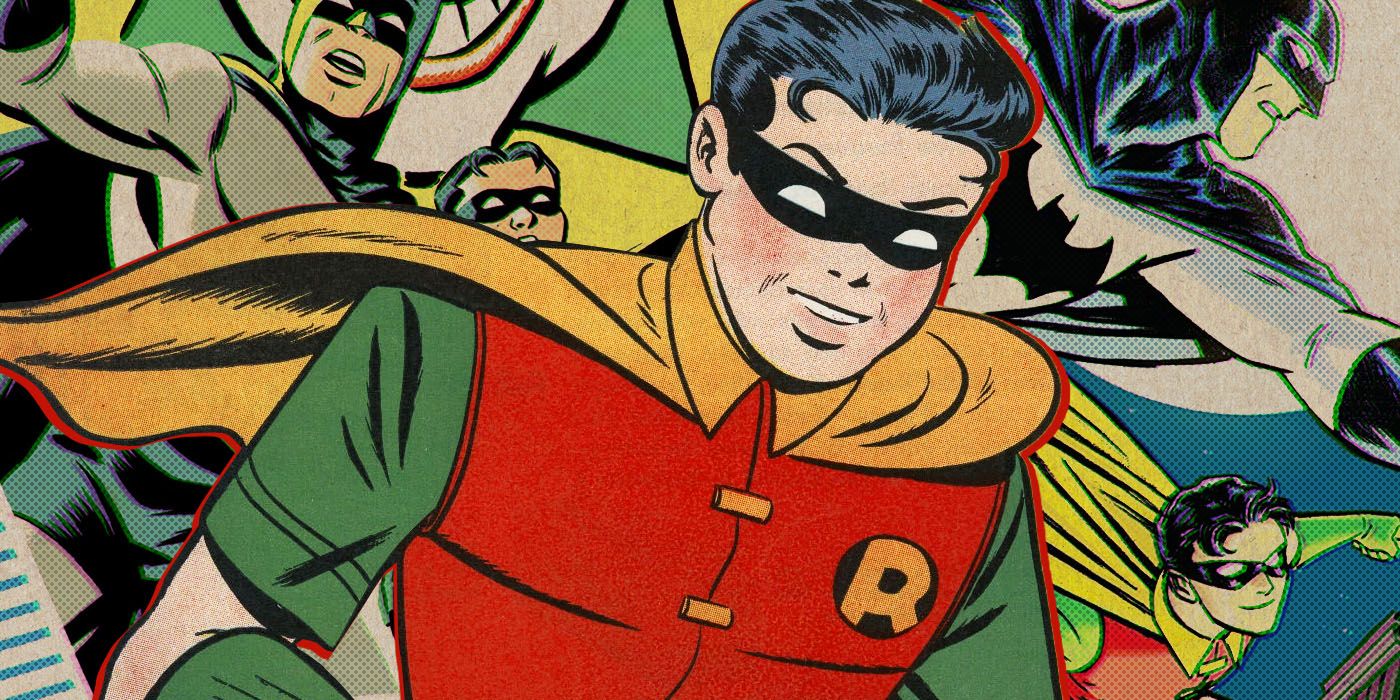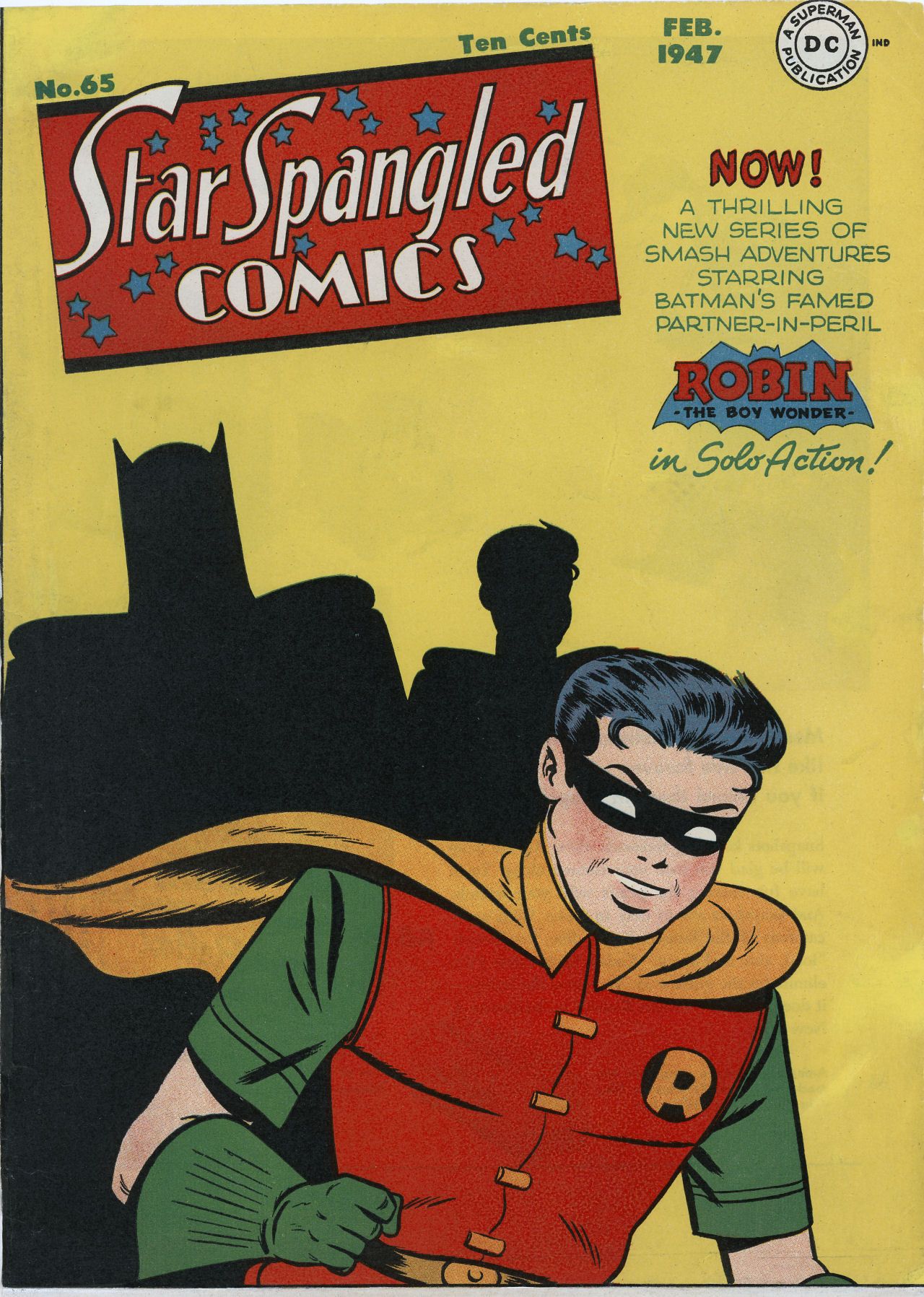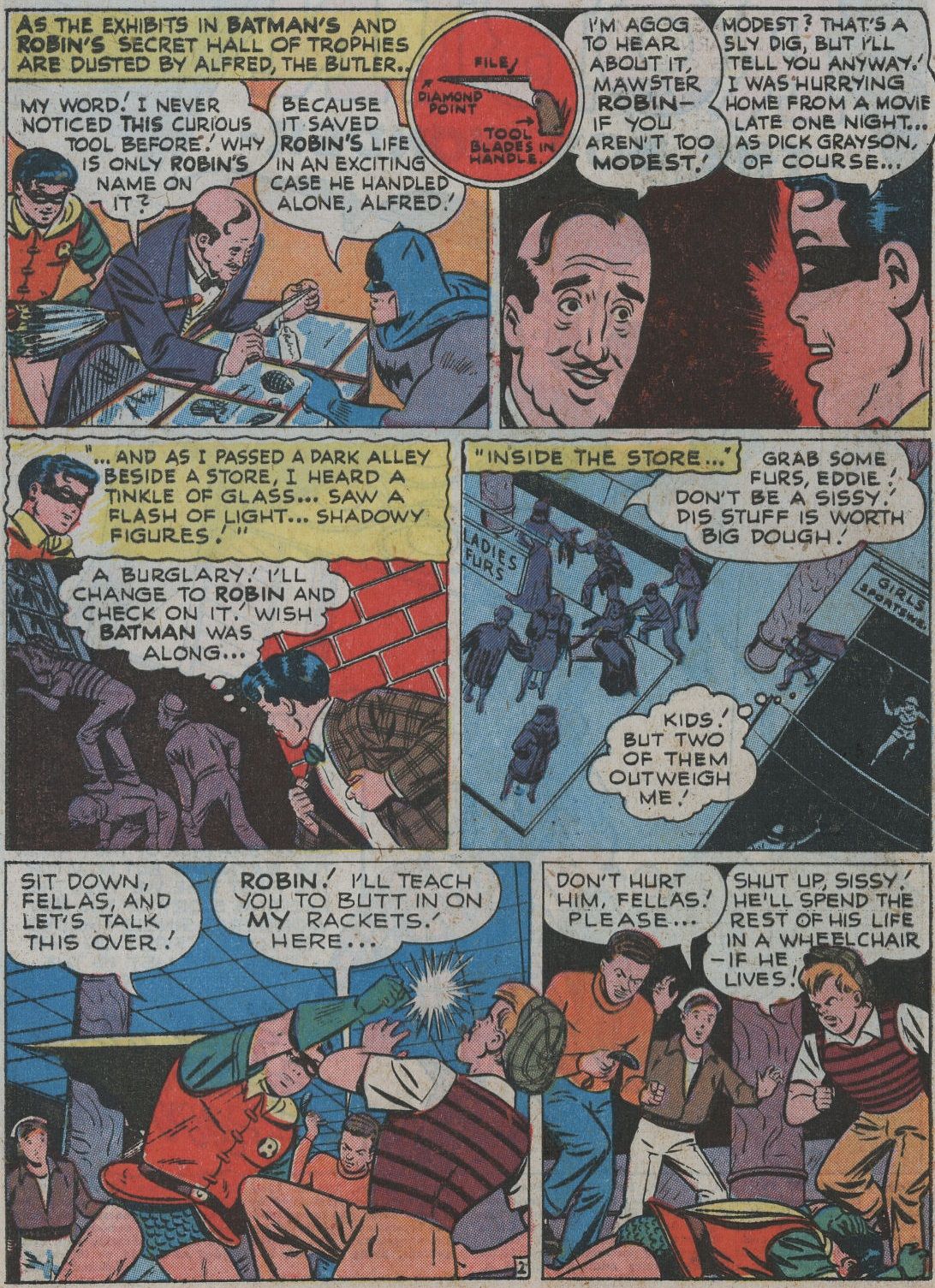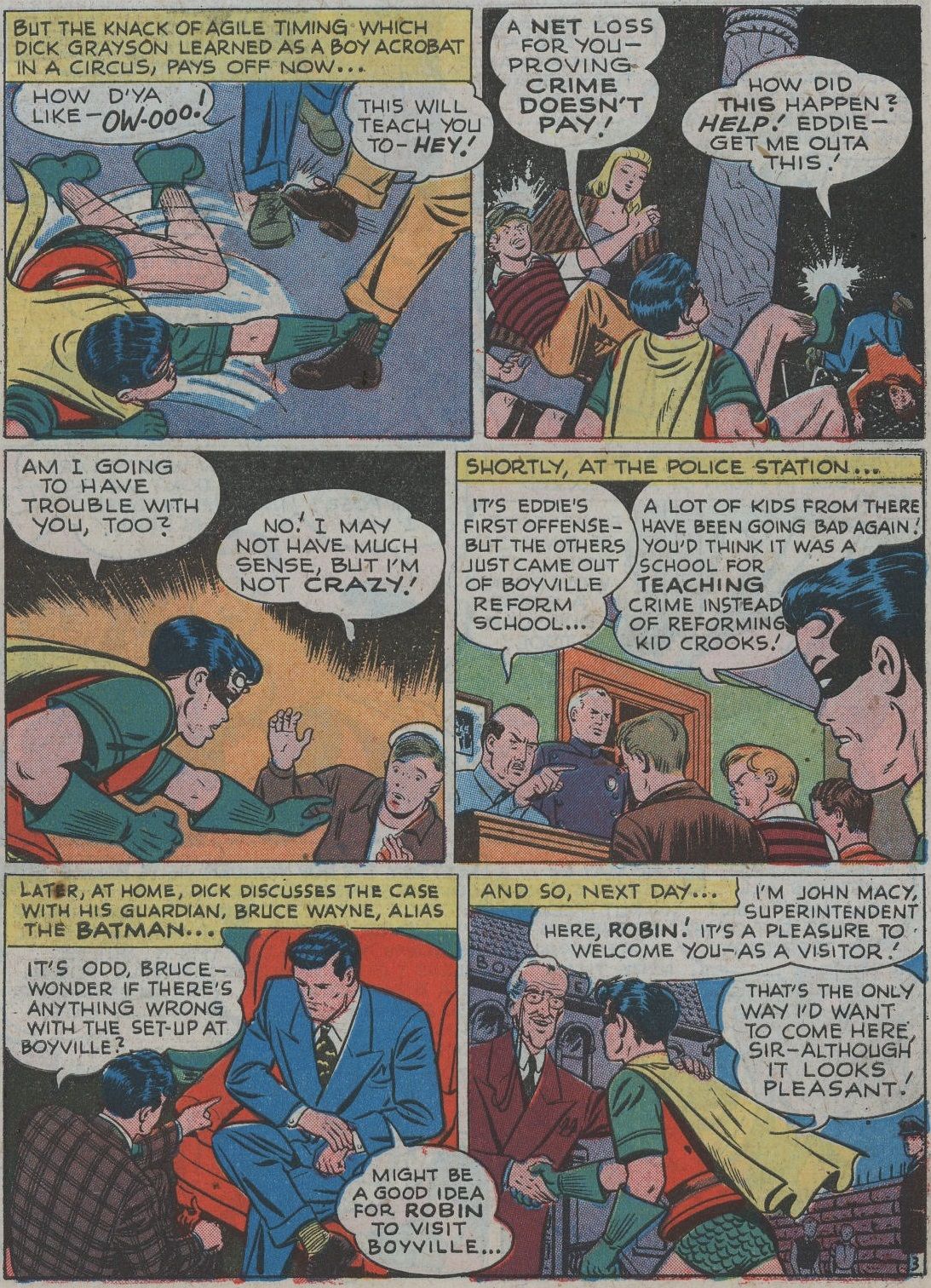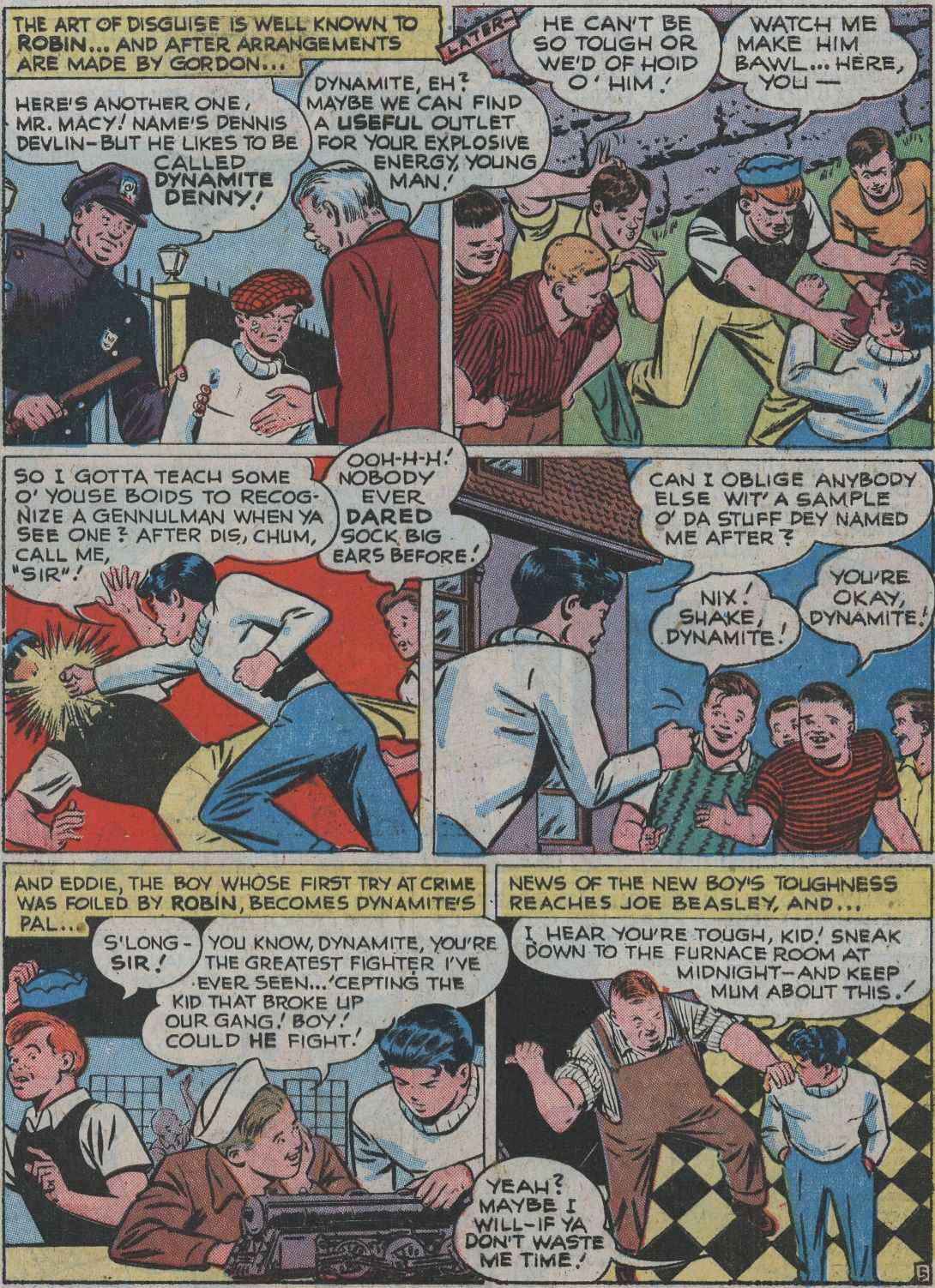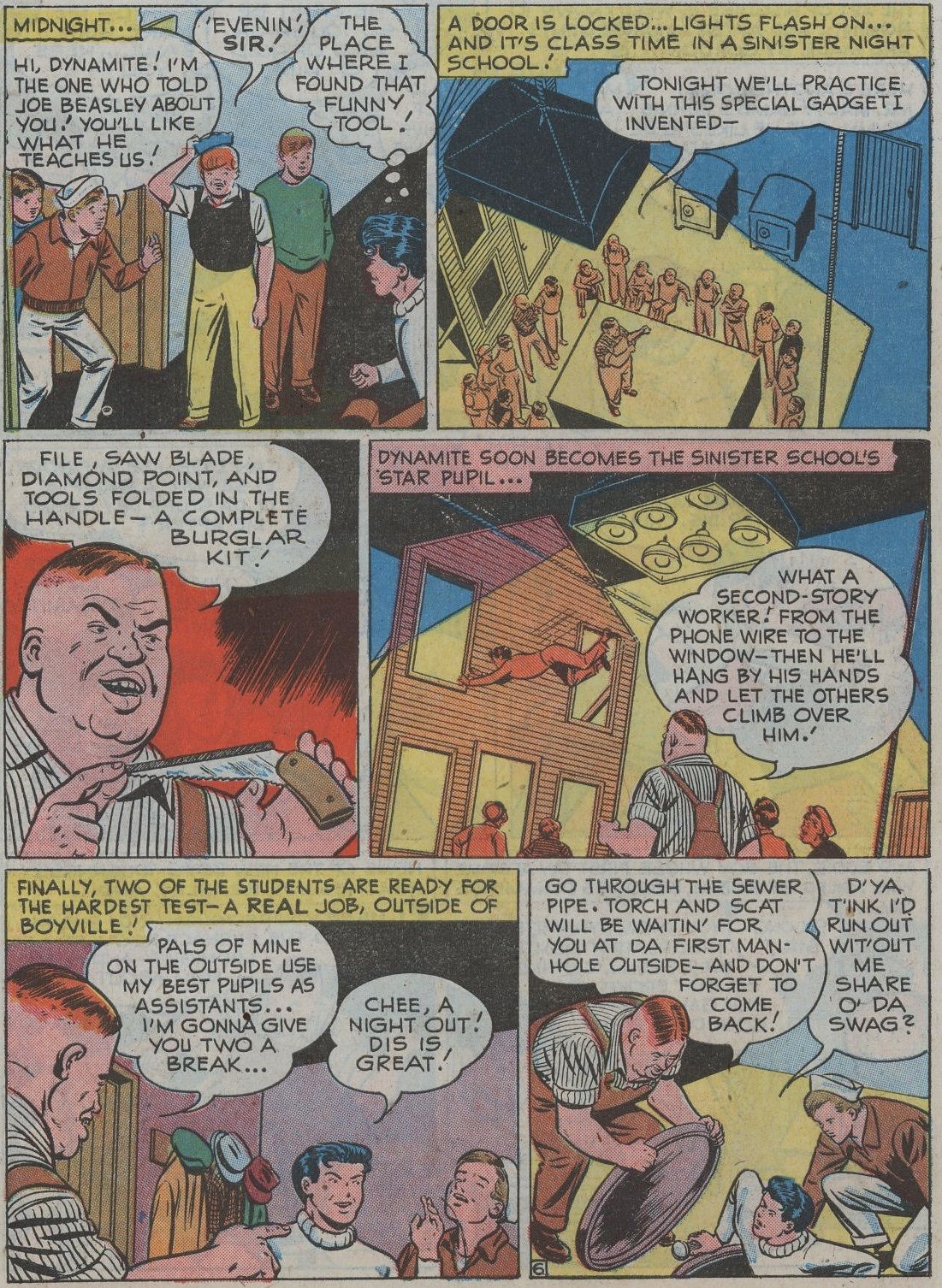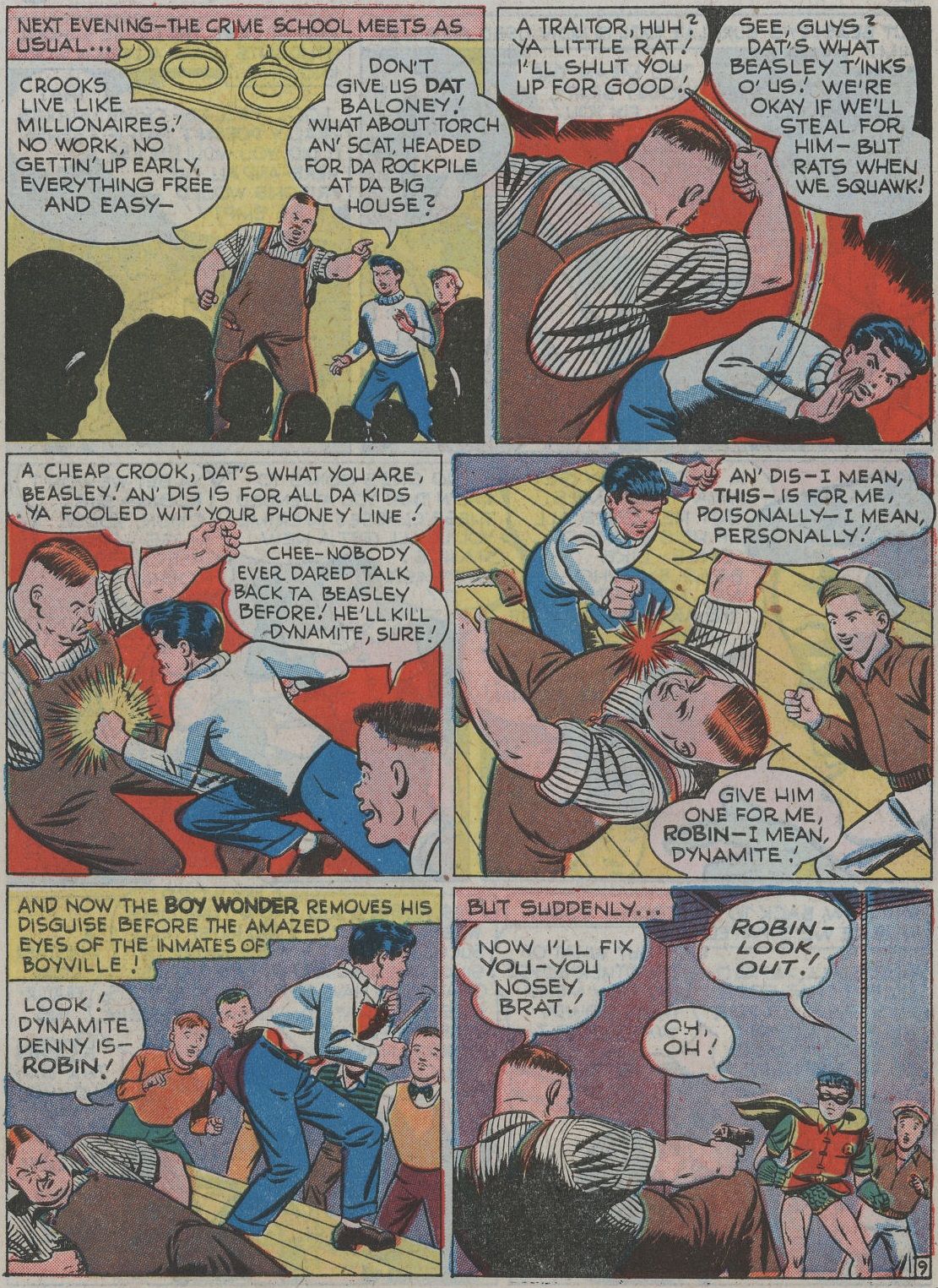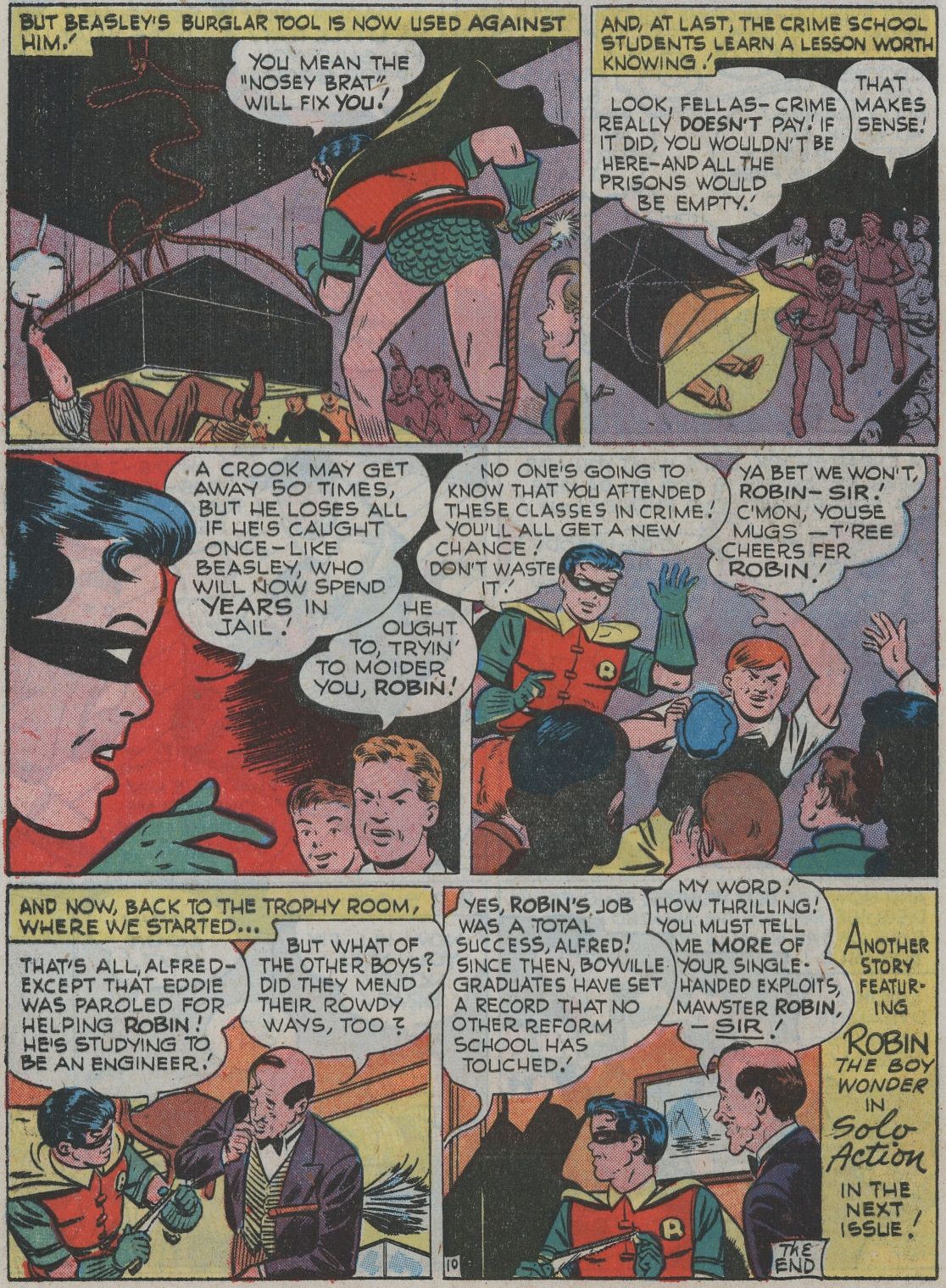Today, we look at Robin's first solo comic book feature.
This is "Look Back," where every four weeks of a month, I will spotlight a single issue of a comic book that came out in the past and talk about that issue (often in terms of a larger scale, like the series overall, etc.). Each spotlight will be a look at a comic book from a different year that came out the same month X amount of years ago. The first spotlight of the month looks at a book that came out this month ten years ago. The second spotlight looks at a book that came out this month 25 years ago. The third spotlight looks at a book that came out this month 50 years ago. The fourth spotlight looks at a book that came out this month 75 years ago. The occasional fifth week (we look at weeks broadly, so if a month has either five Sundays or five Saturdays, it counts as having a fifth week) looks at books from 20/30/40/60/70/80 years ago.
We go back to December 1946 for the first Robin solo feature in Star Spangled Comics #65 (by Bill Finger and Win Mortimer).
A few years back, my friend Drew wrote to me to have me confirm what he was already pretty sure was correct (and it was), which was that Robin actually appeared in MORE comic books during the Golden Age than Batman, because once Robin was introduced in the pages of Detective Comics #38, he appeared in every comic book that Batman appeared in during the Golden Age (Batman, Detective Comics and World's Finest Comics), but Robin, on the other hand, had over a dozen solo comic book appearances that DIDN'T involve Batman. And that feature started in Star Spangled Comics #65!
Win Mortimer, who was one of DC's main artists of this period after making his comic book debut in 1945, drew the striking cover...
The comic book has an unusual framing sequence, in that Alfred sees a trophy that he doesn't recognize and Batman explains that it was from one of Robin's SOLO adventures, which somehow suggests that Robin has been doing this for so long that Alfred has missed out on a pile of adventures, but Robin has also not aged at all in that time period, so it is just kind of odd. In any event, it opens with Dick Grayson trying to stop a group of teens from committing a crime...
Dang, dude! They were going to kick him so hard that he would need a wheelchair IF HE LIVED! That's some hardcore stuff!
Robin quickly recovered and took down all of the kids, but then Robin discovers that the teens were all from the same reform school and Robin and Batman suspect that something might be wrong at Boyville (this was during a period where films like Boys Town were HUGE)...
After doing a cursory investigation, Robin asks Commissioner Gordon to help him go undercover at the reform school (a fascinating unanswered question is whether the head of the school was in on the scam or if he was just oblivious)...
Eventually, "Dynamite Denny" has impressed everyone so much that the school janitor lets him in on his scam, that he is teaching kids how to commit crimes WHILE in reform school and he farms out his best students to criminals who need helpers. He has also invented a sort of Swiss Army Knife for criminals, which seems like it is right out of Bill Finger's famous gimmick books (Finger would keep notebooks filled with ideas that he could work into stories, like, say, an idea for a criminal Swiss Army Knife)...
Robin and his friend, Eddie, get recruited for a mission but Robin instead takes down the criminals. He then returns to the school and turns the other teens against their "teacher"
I love the bit where Robin accidentally says "poisonally" instead of "personally." Ah, Golden Age Comics, you sure did find Brooklyn accents amusing as all get out.
Robin then gets to continue his speech to the other teens, and honestly, the fact that they were all really impressed by Robin when he was "Denny" was probably a big help for the Boy Wonder in getting the kids to take him seriously.
I love Batman off panel explaining some of the leftover exposition, like how Boyville became a model reform school after this incident and that Eddie was paroled due to helping out Robin. This, though, then directly set up the concept for the series as new Robin solo adventures. Note, of course, that this issue DID involve Batman and a good chunk of Robin's solo issues still did involve Batman in some capacity, but enough did not that Robin was able to pass Batman in comic book appearances during the Golden Age, which is still just too, too funny of a piece of comic book trivia.
If you folks have any suggestions for January (or any other later months) 2012, 1997, 1972 and 1947 comic books for me to spotlight, drop me a line at brianc@cbr.com! Here is the guide, though, for the cover dates of books so that you can make suggestions for books that actually came out in the correct month. Generally speaking, the traditional amount of time between the cover date and the release date of a comic book throughout most of comic history has been two months (it was three months at times, but not during the times we're discussing here). So the comic books will have a cover date that is two months ahead of the actual release date (so October for a book that came out in August). Obviously, it is easier to tell when a book from 10 years ago was released, since there was internet coverage of books back then.

